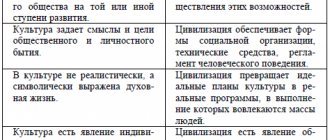You've probably ever noticed an adult acting immaturely and wondered what the hell happened to that person when he starts acting rationally and maturely! This is a paradox, because the emotional maturity of a person is not related to physical maturity; these two phenomena are different poles. Emotional maturity does not grow with your chronological age and means that no matter your age, your emotional maturity is not guaranteed.
Emotionally mature people, sensible people who take full control of their lives. To put it mildly, they do not whine or look for someone to blame, but think about their lives and the role they play in the lives of other people. Emotionally mature people don't make excuses. Every emotion that emotionally mature people show is real. They do not try to complicate their own or other people's lives. Suffice it to say that emotionally mature people lead well-ordered lives because of their healthy outlook on life. Emotional maturity has many different levels. Its initial level includes awareness of one's influence on one's own life and responsibility for it, and not blaming others for one's failures.
Next, the person begins to become honest with his emotions, not by projecting idealistic emotions, but by being confident in expressing real emotions. Then the person goes upward in the direction of achieving final emotional maturity, the person becomes emotionally open and does not suppress his feelings.
The next level is to make the task emotionally decisive, which can be achieved by respecting one's own feelings. And finally, reaching a level of emotional detachment, which is a direct consequence of truly understanding emotions, therefore letting go of all emotions, be they good or bad. Leaving you feeling satisfied and happy. How to achieve emotional maturity? Let's explore the concept of emotional maturity by learning more about its traits and how to work on it.
Emotional Intelligence - Concept
Emotional intelligence, like rational intelligence, can be measured using psychometric tools and expressed the level of social competence in the form of the so-called emotional intelligence quotient (EQ). In England, the most well-known tests for studying emotional intelligence are: MEIS - Multifactor Emotional Intelligence Scale and MSCEIT - Mayer-Salovey-Caruso Emotional Intelligence Test.
The term emotional intelligence appeared in psychology relatively recently: in 1990 thanks to Peter Salovey and John Mayer. Their concept of emotional intelligence was modified and popularized into a marketable version by Daniel Goleman, the author of a popular book called Emotional Intelligence.
In general, emotional intelligence can be understood as a set of abilities that determine the use of emotions in solving problems, especially in social situations, or can be defined as a set of abilities that determine the effectiveness of processing emotional information.
How did P. Salovey and J. Mayer describe emotional intelligence? The authors identified four groups of abilities and skill sets that make up it:
Perception, evaluation and expression of emotions:
- the ability to recognize emotions in one’s physical and mental states;
- the ability to recognize emotions in other people and emotional messages contained in objects, such as works of art;
- the ability to adequately express emotions and needs associated with feelings;
- the ability to understand adequate and inadequate, real or falsified non-verbal emotional messages;
Facilitating the thinking process with the help of emotions:
- redirecting thinking, prioritizing based on feelings associated with objects, events or other people;
- evoking and imitating real emotions to facilitate the formulation of judgments and memories of feelings;
- “reaping” the benefits of mood swings to take into account different points of view and be able to integrate the different points of view created by mood;
- the ability to use emotional states to help you solve a problem or stimulate your own creativity;
Understanding and analyzing emotional information, using knowledge about emotions:
- the ability to understand connections between different emotions;
- the ability to perceive the causes and consequences of feelings;
- the ability to interpret complex emotions, combine individual emotions and even contradictory emotional states;
- the ability to understand and predict likely emotional sequences;
Emotion regulation:
- the ability to open up to negative and positive feelings;
- the ability to control emotions and think about them;
- the ability to consciously evoke an emotional state, be able to evaluate its value, usefulness or ignore it;
- the ability to manage your emotions and the emotions of others.
She doesn't let the past ruin the present.
It's hard not to let our emotional wounds from the past influence who we are now. In fact, most people are oppressed by their emotional past.
There is an opinion that looking at the past is a waste of time. The past is gone forever and you need to cleanse your inner world of its remnants. Otherwise, this emotional “dirt” will only accumulate over the years , creating an ever-increasing mountain of emotional pain.
So it's like you're allergic to dust and you sweep it under the living room rug , thinking it won't affect you.
If we do not pay enough attention to our life and emotional experiences, “unsorted” memories take the place of new positive emotions and this prevents us from moving forward.
People who have reached a certain degree of emotional maturity are able to properly complete the stages of their lives. Although they understand that this is a difficult process that will require considerable effort. In other words, emotional maturity gives you the understanding that you need to live in the present, and not in the past or future.
How to develop emotional maturity?
Be a giver.
A person must develop selflessness in order to achieve emotional maturity. Selfless behavior instills a sense of authenticity in a person. Such a person is sensitive to the needs and emotions of other people, and is not held back by the shackles of vanity.
Insight.
A person must become discerning in order to gain emotional maturity. Other people's opinions must be carefully analyzed, and any opportunity to improve oneself must be of paramount importance.
Surround yourself with positivity.
You must make a conscious effort to be surrounded by positive people. Those people who believe you and are honest with you. They can teach you a lot that you can apply to your life.
Unbiased.
In today's world, almost everyone claims to be open-minded. This concept has become a beautiful label. Although few actually have this trait. This is because true open-mindedness is the ability to admit that you may be wrong.
Many who consider themselves to be open-minded are actually just good listeners. Such people will happily listen to new, revolutionary points of view and ideas. However, they usually reject them out of hand. This indicates a certain limitation that does not allow new views to influence their established beliefs about the world around them.
When you share new ideas and perspectives with them, they will smile and nod at you. But not even a shadow of understanding flashes in their eyes. There will be no emotional response.
Emotionally mature individuals are aware of themselves and their values quite well. That is why they are able to perceive everything new without immediately accepting or rejecting it. They are the masters of their mind and will gladly listen to everything that is radically different from what exists in their head. After some time, they will discard a lot, but they will definitely adopt the most valuable and best ideas.
They do not care about the feelings of loved ones if they bother them
For emotionally immature individuals, family and friends are a tool for achieving personal goals. Without a twinge of conscience, they manipulate them in any way, even the most vile. At the same time, they do not care what their loved ones experience, since the only person whose feelings they are interested in is themselves. They don't care about the problems of others, why they get angry, upset, cry or feel anxious. Moreover, emotionally immature individuals become irritated and angry when talking to loved ones and discussing their emotions. They don’t care that their loved ones lack communication and support. They Play the Victim Role Emotionally immature people like to play the victim role when it is especially beneficial for them. By taking on this role, they greatly distort reality, ignoring certain events, or taking words out of context. For them, this is another way of manipulation. Such people often choose partners who will subsequently experience dependence on these relationships, and therefore will try with all their might to hold on to them. For emotionally immature people, this gives them the opportunity to act out dramas, perpetuating their position as a victim, which allows them to get what they want.
Emotionally immature people believe that the world revolves around them. Therefore, before you start building relationships with such people or creating families, you should think a thousand times whether the game is worth the candle. These people will use the kindness of their partners to their advantage to get what they want. And the likelihood that they will grow up is extremely low. If, for some reason, a person is forced to live with an emotionally immature person, he needs to learn to suppress whims and hysterics, completely ignoring them. In such a relationship, the partner will have to take on the responsibility of an adult who will raise an emotionally immature person.
Tips for managing emotions
To learn how to manage your emotions, determine what type of person you belong to:
An emotional person is one who is not used to holding back.
Such people need to learn to release emotions not on people, but with the help of techniques (angry writing - splashing out on paper through writing, physical activity - burning emotions through the body: running, squats, cleaning the house, breathing exercises and other intense activities).
An unemotional person is one who is accustomed to not noticing his emotions and suppressing them.
It is necessary to learn to feel and experience emotions without suppressing them. Let them manifest.
This is a step towards recognizing yourself, getting to know yourself and accepting yourself. And then you can apply the methods described in the paragraph above.
When you refuse to feel your emotions, considering them bad or, conversely, ashamed that they are too bright, and you feel that they will not understand you, you are abandoning yourself, you are not accepting yourself holistically.
Here it will help you to understand that the appearance of an emotion is a reflex of our body, it is the nature of our cells, the habit of reacting to an irritant.
This is the level of animal instincts and impulses. And that's okay.
And your task, as a conscious being, is to learn to manage your reactions.
And act not on the basis of a spontaneous reaction, but relying on your feelings and intuition, which are deeper and more thorough, and, therefore, will provide more stability.
Try to address your feelings during an emotional outburst.
Feel how you love your daughter, son, husband, parents and do not want to hurt them. Remember the warmth and tenderness that you feel for them in blissful moments.
And now, this is just a short-term surge for some reason.
If you understand that it is necessary to carry out educational measures, then in a sensory-conscious state it will be much more effective.
This is how the process of growing up, transformation and restoration of vitality occurs.
The difference between emotions and feelings - the opinion of Alena Starovoitova
Watch this short video in which Alena Starovoitova explains what distinguishes feelings from emotions and why it is important to choose feelings. Difference between emotions and feelings
Watch this video on YouTube
Difference between emotions and feelings
Watch this video on YouTube
When you choose to be honest with yourself, when you give freedom to your emotions to express yourself, when you accept and forgive yourself, you release stagnant energy and give it new life in a new quality.
Development Matrix
The acquisition of new roles/skills is determined by the universal development matrix laid down in the early stages of development. Awareness and targeted use of this staged process was proposed by N. Pezeshkian and allows for therapy, conscious development of oneself, relationships with a partner, social environment and fantasy/spirituality. This matrix consists of the following five stages:
- Observation is based on the ability to experience internal and external experiences as part of one's life. This ability originates in the infant's universal identity and is described by Moreno as the “stage of the other.” Conscious use of this stage presupposes the ability to cognitively master/aware and regulate one’s behavior in various situations and areas of one’s life.
- Inventory/understanding – the stage of focusing attention on another. Assumes and develops the ability to determine the content, history, dynamics and possibilities of life situations. Provided by analytical and logical resources of such abilities as justice, accuracy, order, openness, the ability to see the content of the conflict behind emotional manifestations.
- Situational reward/acceptance/motivation - the stage of exalting another part of the experience, overlooking everything else, including oneself, involves the ability to trust and find resources, and create conditions for their use through support and a combination of necessary ways of motivating oneself and others.
- Verbalization/decision/action - the stage of actively placing oneself in the place of another and testing the role of new experience. Ability to take responsibility for achieving change. Openness and honesty, patience and courtesy in conflict resolution, a balance of openness and conscious responsibility for the manifestation of emotional reactions. Ability to make decisions.
- Expanding goals, perspective - interaction in a new role with someone else, the ability to see a goal, predict results
Personality structure – multiple roles
During his life, a person learns, performs and develops many roles here and now. Based on this simple idea (Y.L. Moreno [3], A. Blatner [7]) that everyday behavior is the result of the dominance of one or more of many roles, we make a number of assumptions that, in our opinion, are self-evident:
- Each role has its own identity - a person’s perception, awareness and assessment of himself in different areas of life and in different relationships. 1.1. Identity is manifested in four relationships: “I” (in a role) - in relationships with myself, “You” - I (in a role) in relationships with a partner, “We” - I (in a role) in relationships with others/society..." , “Prime-We” – I (in the role) in a relationship with meaning and the world. 1.2. Each of these relationships plays out in four areas that become the place (locus nascendi) and manner (status nascendi) of action: body/sensory (physical sensation, appearance, motor and reaction patterns, etc.), contact/emotional (openness , ability to perceive value), achievement/logical (ability to recognize boundaries, make decisions, plan and carry out actions, etc.), meaning/future/fantasy (ability to see connections, understand meaning, consequences and feel involved).
- Each role has its own competence - the ability to observe, consciously assess the situation, create energy, make decisions and act constructively, understanding the meaning and consequences of actions. 2.1. The sources and ways of using energy (spontaneity) for any role are 4 basic needs/abilities that develop sequentially in the process of growing up: a. the need to feel and recognize the fact of one’s own existence/the ability to accept and feel support b. the need for love - experiences of unity, fullness of existence and self-worth / ability to love [1] openness, the ability to value oneself and another and feel value. V. the need for cognition, understanding/knowledge of oneself, others and expediency/ability to know, understand and respect oneself, another, to distinguish between one’s own and what belongs to others, to observe justice. d. the need/ability to understand meaning and belong to something larger 2.2. Energy is created in response to external and/or internal stimuli corresponding to four types of needs/abilities. Stimulation can be a) spontaneous, uncontrolled and b) conscious, induced. 2.3. The energy of each role is manifested in fantasy and in reality. The degree of correlation in internal and external implementation depends on the conditions for the emergence of the role and the degree of conscious mastery of it 2.4. New experience is acquired through the inversion of a new role or its aspects and such phenomena as imitation, identification, projection and transfer [3]. The universal development matrix consists of five successive stages and is laid down in the early stages of development. 2.5. Roles can conflict in any dimension of life (body, achievements, contacts, future) and in any area of identity (I, You, We, Great-We)
- Emotional maturity is characterized by awareness of the role (identification) and controllability of the role repertoire (competence), which allows one to actively choose a role appropriate to the situation and expand the range of role choices.
Mature emotional identity is manifested by uniform interest, sensitivity and activity in four areas of life (body, activity, contacts, future) and in four types of relationships (“I”; “YOU”; “WE”; “PRA-WE”). Let's look at the stages/areas of identity development:
Stage: primary matrix. Area: body/feelings. Identity: physical. Ability: conditioning, physical
The conditioning (physical) and two basic (loving and knowing) abilities are awakened to life by the basic spontaneity initiated at this stage
the dominant of survival (eat, grow, be born, breathe, digest, etc.). Energy is activated by changing conditions of life in the womb, birth, change of environment, first breath, first external contacts (breast, feeding, etc.).
At this stage, the basis of action and learning are sensations and reflexes2, which lay down the model of physical and psychological processes. This is pure training
“here-and-now” before the emergence of self-observation, assessment and management skills.
The passive need/ability of this stage - to live and fear - not to be, not to live, not to gain experience of life, to be absent from it, are balanced by the active intention/ability - to gain experience (to develop reflex connections that allow you to perceive space and time, form images);
Uncertainty regarding the main question of this stage according to V. Frankl [4]:
“I am here, but can I (as an integrated being) be here?” – may be the result of insufficient supportive physical stimulation, rejection, traumatic physical experience (violence, trauma) or other splitting and manifest as symptoms of fear and psychological manifestations of schizophrenia.
Having accepted his own existence, the child learns to accept the existence of others, preparing for the transition to the next stage. Thanks to this readiness, the energy manifested by anxiety is not excessive and can be successfully channeled into adaptation.
Stage: secondary matrix. Area: contacts/emotions. Identity: emotional. Ability: basic - love
As sensitivity develops and vision becomes clear, the child understands that his world and his mother’s world are not the same. This shock of transition from a universal to a differentiated universal (subjects and objects are separated) matrix of identity activates the energy of emotions as a way of overcoming the frustration of separation. The reality of being together is replaced by emotional unity. The absence at this stage of separation between objects of fantasy and reality allows you to activate energy not only by real, but also by virtual (fantasy) starters. Therefore, the “I” identity is internalized practically without filtering the attitude of parents and other loved ones, included in reality as a model of self-attitude.
The main tool for creating energy, gaining experience and learning at this stage are the not yet realized and unnamed emotions of primary relationships that model future patterns of relationships with “others”.
At this stage, the passive need/ability - to be loved and fear - not to be loved, to be lonely, not to experience the joy of unity / unification are compensated by the active intention / ability - to love;
An unclear or negative answer to the question: “Do I value my own life enough to enjoy it to its fullest by doing what I really want?” V. Frankl [4] considers the cause of borderline disorders and depression.
Accepting your worth allows you to appreciate the spontaneous expressions of others by demonstrating genuine interest and consideration. Such openness gives a sense of security, allows him to request and use external help when the differentiated universal world to which he has just adapted breaks into two.
Stage: tertiary matrix. Area: achievements/logic
Identity: Intentional/cultural. Ability: basic – cognize
2 for a better understanding of these mechanisms, we recommend turning to the work of L.M. Wecker “Psyche and reality. Unified theory of mental processes." (2000)
The next critical transition to the awareness of the difference between reality and fantasy, to the splitting of the hitherto indivisible inner world causes great anxiety and, at the same time, provides the opportunity to observe oneself, in one’s actions and feelings, to name and remember, and therefore to remember and integrate experience differences and feelings. There is an ability to understand cause-and-effect relationships and predict consequences, consciously direct one’s activity towards achieving something pleasant and/or avoiding something unpleasant, creating the energy of clear intentions
The main tools for creating energy at this stage are words, thoughts, images, associations and logic. The passive need/ability of this stage - to be understood and to receive the appropriate attitude and fear - of not being understood, to make mistakes, to suffer defeat and failure are neutralized by the active intention / ability - to understand others and treat them in accordance with this understanding;.
V. Frankl [4] calls this stage spiritual; we are more inclined to call it cultural, because it reflects the nature of group, cultural identity (a socially determined scale of values and assessments, aspirations and discipline of action). According to Frankl [4], the unanswered question: “Do I have the right to be who I am, is it good for others, what is my role and value in society?” – manifests as hysterical traits, possibly personality disorders and anxiety.
Self-respect, trust in your intentions and decisions makes it possible to respect and trust other people (with their different experience, vision, style of decision-making and action). This allows one to ask oneself about meaning, which is unlikely to be independently recognized, formulated, prioritized and resolved if social awareness, acceptance, self-respect and openness are absent.
Stage: maturity. Area: future/intuition. Identity: Spiritual. Ability: spontaneity developed into creativity (meaningful creation)
If all three abilities are adequately activated and developed, primary spontaneity is recognized and manifests as creativity: the ability to integrate, identify, understand relationships and dynamics, make decisions and energetically support their implementation. The energy of this stage is created by inspiration3, vision and the courage to trust them and make decisions based on them.
The passive need/ability to be defined (identified by someone/something larger, more significant than the individual himself), to be endowed with meaning and perspective, and the fear of meaninglessness are overcome at this stage by the active intention/ability to realize, understand and define the general and the particular ( own and others) meaning, to feel eternal/universal/spiritual loneliness.
Lack of answer to the question: “What will my life change in this world? What am I living for? What big and great am I connected with? – V. Frankl [4] associates with symptoms of dependence (as compensation for the lack of one’s own meaning with borrowed meaning).
The development of meaningfulness is facilitated by choice and actions based on values, participation in a group united by an idea, or a religious movement. Awareness of meaning brings the joy of harmony and unity with the world, the possibility of free, truly creative development in cooperation with others and the Universe itself.
Hypothetically, the acquisition of meaning can modulate the development of lower stages/abilities. There are known cases when primitively developed people and entire nations, finding meaning, changed their lives, showing the world inspiring
3 the term inspiration seems to give us some insight into human nature.
examples of unlocking the potential inherent in the very nature of a human being.
Internal and external stimulation in spontaneous and conscious warm-up
The clash of internal needs (nerve impulses, emotional needs, conscious desires, spontaneous and integrative/spiritual needs) collide with the conditions of the external world (environment and time, attitudes/feelings of other people, expectations of others, laws of the universe/values) leads to stress, mobilizing resources an organism that creates energy for adaptation.
When encountering reality, the child connects all events with his spontaneous actions with the logic: “I am the cause of everything.” The resulting action-result complex that satisfies basic needs will be perceived as desirable and vice versa. Thus, based on the ratio of the degree of satisfaction, a model of the scale of prioritization/evaluation/preference of actions/results is built. As it develops, the ability to consciously create energy based on decisions made increases (see Table 1).
Table 1. Examples of spontaneous and conscious energy creation
| SPONTANEOUS, UNCONTROLLED HEATING | ||||
| Body/sensory | Contacts/ emotional | Achievements/Logical | Future/fantasy | |
| Internal | Hunger | Striving for emotional unity | Striving to be understood | Unconscious expectations |
| External | Lack of food | Indifference | Not understanding | New situation |
| CONSCIOUSLY INDUCED WARMING | ||||
| Interior | Healthy eating idea | Active empathy | Awareness and clarification | Flexible planning |
| External | Diet and eating regimen | Friendship | Discussion | Role-playing game |
The created energy is realized depending on the ratio and awareness of internal and external stimuli in four main areas (Table 2):
1. Constructive model – compensation, adaptation, authenticity, equity/collaboration
The balance of normal internal stimulation with adequate external stimulation (encouragement/frustration) from the base environment leads to predominantly adequate and conscious self-motivated behavior consistent with the values and aspirations of the individual, aimed at the development of himself and his relationship with reality. This behavior is characterized by the ability to equally see, understand, appreciate and take into account external requirements and internal needs, and enter into mutually beneficial agreements.
2. Destructive model – overcompensation, dominance/competition
If insufficient external stimulation (reactions of encouragement/suppression from the base environment) is not able to balance normal or abnormally high internal stimulation, a tendency is formed to ignore external conditions, needs and expectations, leading to an overreaction in cases where reality does not
Table 2. Reactions and identity in the 4 main models
| Constructive | Destructive | Dependent | Scarce | |
| Reactions | ||||
| Body | tenderness, conscious freedom, plasticity, comfort | sympathetic reactions, allergies, asthma, restlessness, rapid speech, panic attacks | Parasympathetic reactions, chronic diseases, hysteria | fetigo, apathy, depression, autism, decreased metabolism and reactions |
| Achievements | proactivity, understanding, courtesy, openness, honesty | hyper-rationalization, suppressive activity, workaholism, actions for the sake of actions | reactive behavior, laziness, lack of independent initiative, irresponsibility | ambivalence, lack of intention, inaction |
| Contacts | Love, | Competition, | addiction, | indifference, |
| respect, | suppression | competition, | feeling | |
| cooperation | hyperreactivity, | manipulation, | emotional | |
| oh, encouragement. | explosiveness, | victimization | desolation | |
| aggression. | ||||
| Meaning | ethics, thoughtfulness and vision, creativity | compulsion, fixity, inconstancy, fanaticism | guilt, ambivalence, dramatic unhappiness | indifference, uselessness, doom, hopelessness |
| Identity | ||||
| I | “I am whole, valuable, consciously active and organic in the developing world” | “I am a master who must prove and maintain my integrity and worth in spite of this world by understanding and conquering it.” | “I am a victim of the world, entirely dependent on providence, surviving and justifying » | ignoring one's interests and/or denying their significance |
| You | own interests are taken into account equally with the interests of the partner | The interests of the partner are ignored and suppressed | their interests are ignored in favor of the partner, and responsibility is transferred to him | ignoring and/or denying the interests of the partner and the significance of the partnership |
| We | Group interests influence and can determine decisions | – group interests are ignored or viewed as competitive | the interests and assessments of the group are preferred to one’s own interests and judgments | ignoring one's own and public interests |
| Forefathers | A conscious system of values and meaningfulness determines all actions. | Short-term desires are preferred over long-term prospects | uncertainty in one’s own values is compensated by fanatical adherence to other people’s meanings | denial of the meaning and purposefulness of one’s existence and reality |
meets expectations. Such little-conscious manifestations are charged more with the energy of internal conflicts than with the real relationship between the individual and reality. In relationships, this leads to WIN-LOSE agreements.
3. Dependent/passive model – hypocompensation/competition
Excessive external stimulation (encouragement/suppression) from the base environment suppresses spontaneity, which leads to capitulation, feeling like a victim, dependent (on highly charged external relationships/conflicts)
/reactive behavior, building relationships of the “Lose-Win” type.
4. Deficit model – exhaustion, decompensation
A deficiency of intentions and mentality can be caused by 1. a physical disorder of internal stimulation and reflection; 2. depletion of spontaneity under the influence of insufficient external stimulation (encouragement/suppression) from the base environment, regular ambivalent and/or frustrating reactions/stimuli; 3)
“paralysis” of spontaneity under the influence of a shocking event/series of events. In this case, a person cannot recognize, understand, value and realize either his own or others’ interests, forming “Lose-Lose” agreements.











